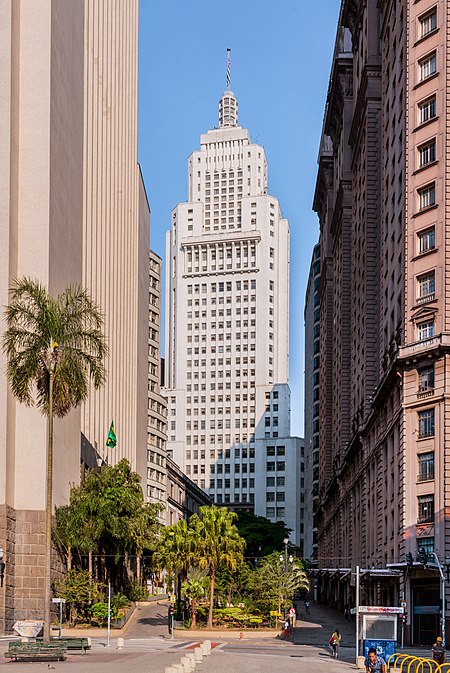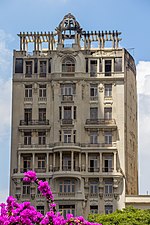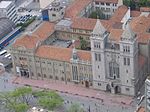Altino Arantes Building
Art Deco architecture in BrazilCentral Zone of São PauloEmporis template using building IDOffice buildings completed in 1947Skyscraper office buildings in Brazil ... and 2 more
Skyscrapers in São PauloTourist attractions in São Paulo

The Altino Arantes Building (Portuguese: Edifício Altino Arantes), also known as the Banespa Building (in Portuguese: Edifício do Banespa), and most popularly by Banespão (big Banespa) is an important Art deco skyscraper located in São Paulo, Brazil.
Excerpt from the Wikipedia article Altino Arantes Building (License: CC BY-SA 3.0, Authors, Images).Altino Arantes Building
Rua João Brícola, São Paulo Sé
Geographical coordinates (GPS) Address Phone number External links Nearby Places Show on map
Geographical coordinates (GPS)
| Latitude | Longitude |
|---|---|
| N -23.545833333333 ° | E -46.633888888889 ° |
Address
Edifício Altino Arantes (Edifício Banespa)
Rua João Brícola 24
01014-900 São Paulo, Sé
São Paulo, Brazil
Open on Google Maps











